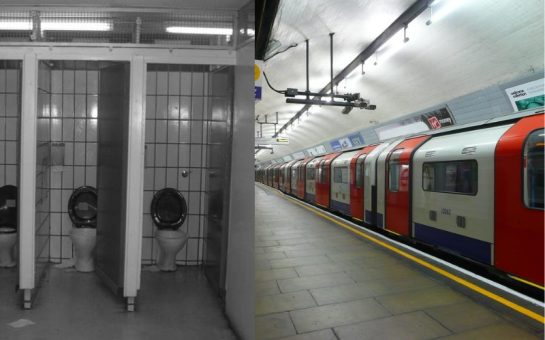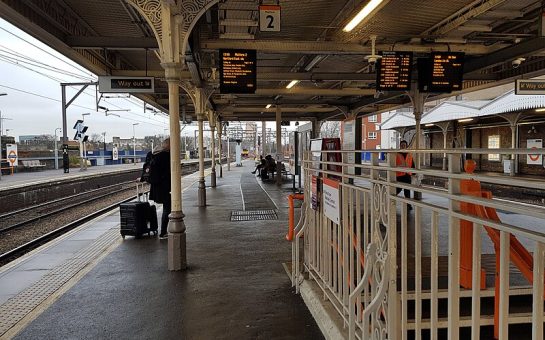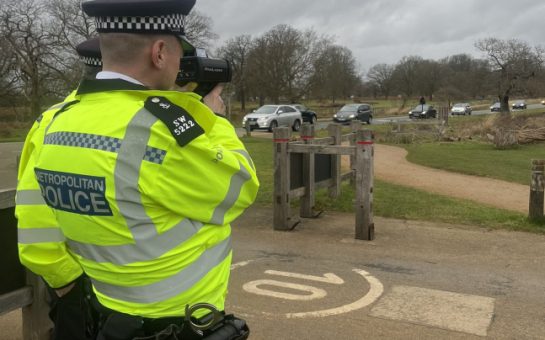By Daniel Gayne
July 3 2020, 10.20
Follow @SW_Londoner
Crime on the London Underground is worse now than a decade ago, while the bus network has become steadily safer.
Figures from London Datastore and TfL’s crime bulletins reveal a rise in crime rates on the London Underground & DLR since 2015-16, fuelled by an explosion in rates of theft, after a substantial decline in the first part of the decade.
On the bus network, the number of recorded crimes declined steadily over the decade and the number of crimes per million journeys dropped by 30% between 2010/11 and 2018/19.
Siwan Hayward, Transport for London’s (TfL) Director of Compliance, Policing and On-Street Services, said: “Any crime reported on London transport is taken incredibly seriously.”
She added: “We are working hard with police to tackle theft, as well as reversing the rise in aggression and anti-social behaviour.”
The main source of increases in crime appeared to be theft, for which rates are rising even on the bus network and outstrip rises in London generally.
According to TfL, the increase in theft has accounted for 98% of the overall increase in transport-related crime between Q2 in 2018/19 and 2019/20.
However, Ms Hayward stressed that this can be partly explained by BTP launching their online crime reporting service.
Overall crime rates in London followed a similar pattern to the London Underground and DLR over the same period, dropping to a low of 77.88 (crimes per thousand pop) in 2013-14 before rising to 2018-19.
Both the decline and subsequent increase were more severe on the underground than in the city at large
Dr Andrew Newton, Associate Professor in policing and criminology at Nottingham Trent, said: “It’s possible that some of the increases you are seeing on the underground are reflective of the effectiveness of the reporting to stop it.”
He referred to the Report it to Stop It (RITSI) campaign, which has targeted underreporting of unwanted sexual behaviour on transit since 2015.
According to TfL, reporting levels doubled in the first year, and a paper published by Dr Newton and others found that the increase in reporting was not due to a rise in the prevalence of sexual offences.
It also found that RITSI had a more visible effect on reporting of offences on the London Underground and DLR than on buses.
Ms Hayward said: “We know that for too long these crimes have gone unreported, but as a result of the Report It to Stop It campaign, the number of people reporting these disgusting crimes with the confidence that action will be taken, has increased.”
She pointed out that TfL and BTP (British Transport Police) run regular covert patrols on the Tube network with plain clothed officers, which she claimed had been successful in catching offenders and encouraging reporting.
TfL funds more than 3,000 officers across the Metropolitan Police Service, BTP, and City of London Police.
The Underground and DLR are both policed by a sub-division of the BTP’s B division, while the bus network is overseen by the Met’s Safer Transport Teams.
Studies have shown that heavily congested stations, and those with a greater number of paths and roads nearby, are at increased risk of thefts.
Staffing levels and the presence of more domestic buildings nearby were factors that reduced risk.
20.8% of theft on the London Underground occurs on weekdays during the evening peak, between 5pm and 8pm, and another 14.5% occurs during Night Tube operation.
Theft on the bus network peaks between 6pm and 7pm, increasing throughout the day from the morning peak.
Data from a three month period in 2019 revealed Westminster, Haringey, and Hackney as hotspots of theft on the bus network, though this may simply reflect crime rates in those areas.
Dr Newton said: “Crime on public transport is generally fairly reflective of crime in the surrounding areas that the routes travel through.”
Researchers at the University of Cambridge found that randomly assigned foot patrols on the Underground’s highest crime platforms reduced public calls for service by 21% on the treated platforms.
Dr Newton said that platform policing was one approach to consider, but that it should probably be one among a range.
He added that random patrols were likely to be more effective for certain crime types.
Sunshine means more crime
The data also revealed a regular pattern of crime across the calendar year, with highs in mid-autumn and early spring, and lows in late-summer and winter months.
The relationship between weather patterns and criminal activity has long been a subject of interest for criminologists.
“There are seasonal fluctuations in all types of crime, reflective of how opportunities, and lifestyles, and working patterns change,” said Dr Newton.
He noted that in the summer more people are out drinking, possibly getting trains or buses home later.
Similarly, the spike in mid-autumn may be due to half-term in schools, and major festivals like Halloween and Bonfire’s day.
School holidays, bank holidays, sports events and festivals are also potential factors as they can increase opportunities for criminal activity.
He said: “Things like going to work you do whatever the weather, but some of your more discretionary choice type activities you will do when the weather is better, so that influences the presence and availability of potential victims.”
TfL encourages anyone who experiences or witnesses a crime to report it by calling 101 or texting 61016.




